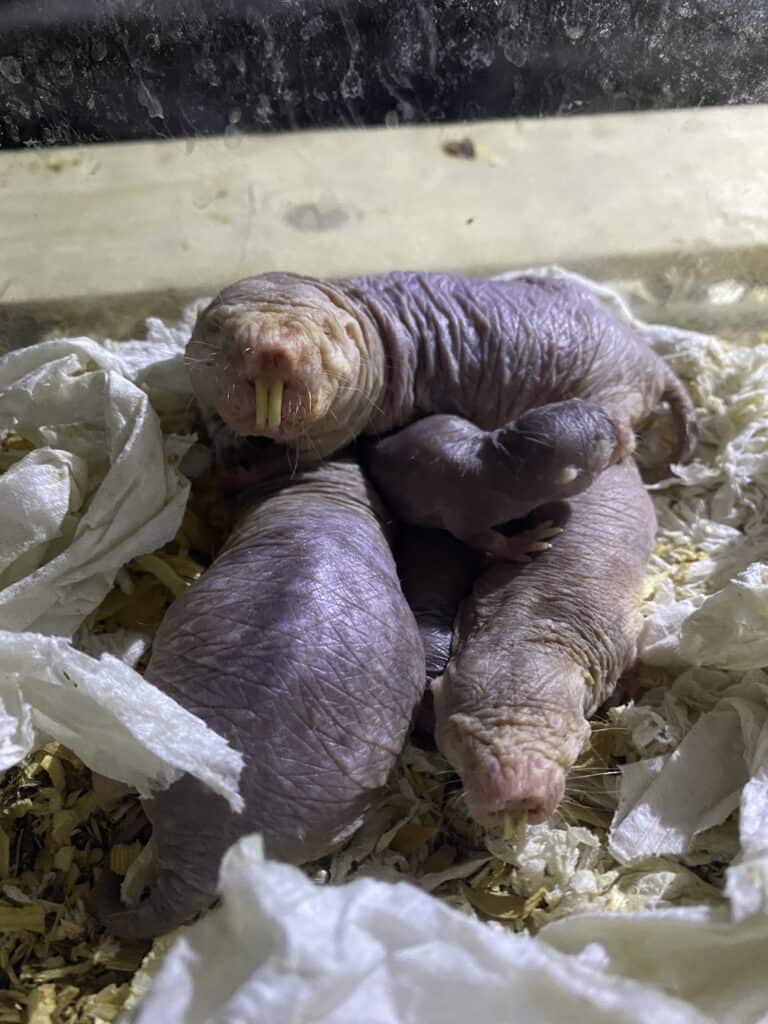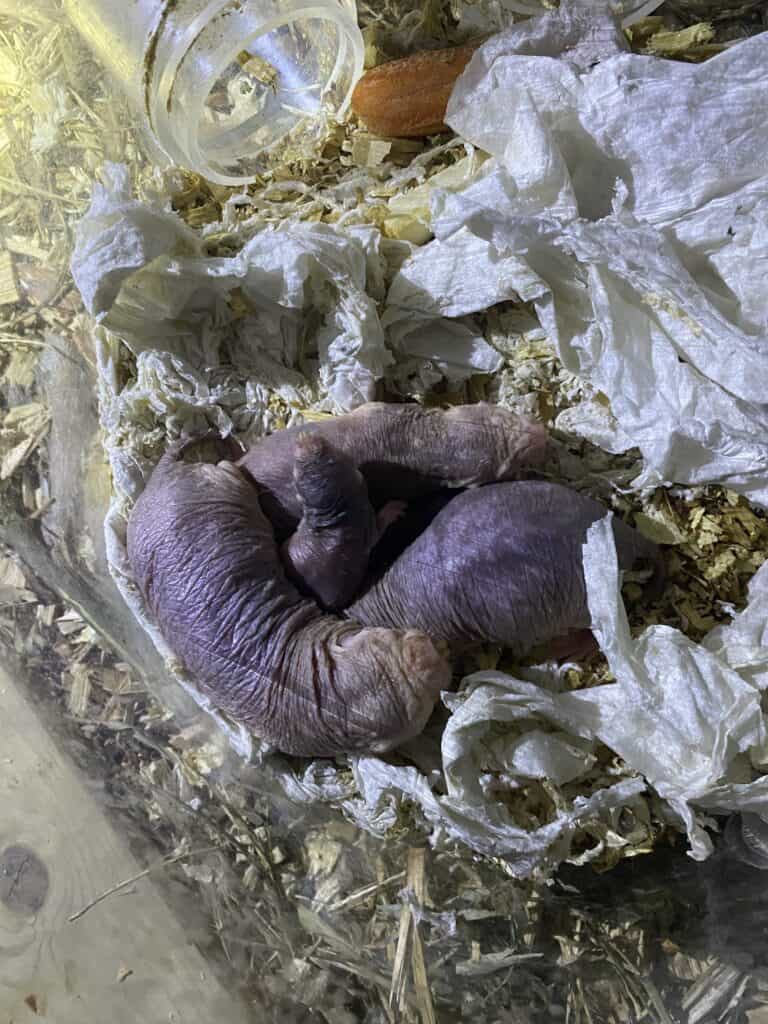Happy New Year and may the New Year bring happiness, peace, and prosperity to you and your family. For this week’s blog I’m talking to you about one of our newest additions to the park, Naked Mole Rats. If you still haven’t come across them yet they are pink, nearly hairless subterranean rodents that kind of look like a tiny walrus or perhaps a bratwurst with teeth.

Habitat
Found in eastern Africa, specifically in Ethiopia, Kenya, Dijbouti and Somalia. They live exclusively in underground tunnels in grassy, semi arid regions. They are equipped with powerful jaw muscles and very large incisors which they use to dig their tunnels. Their sense of smell is important, having no external ears and tiny eyes makes them virtually blind. They are also very sensitive to vibrations in the ground and the movement of air currents.
They live in complex underground tunnel systems. Tunnels connect nest chambers, toilet areas and food sources. Burrowing is important as it’s the only way these animals find food because they do not travel above ground. These burrowing rodents eat the underground parts of plants, particularly the succulent tubers. By doing this they obtain all their water they need through their food. Therefore, they do not need to drink.
Diet
When the group finds a large tuber they generally bore through it, eating mainly the interior flesh while leaving the thin epidermis intact. Behaviours like this may enable the plant to remain healthy for some time and providing a long term food resource for the colony. Their diet is high in cellulose which is difficult to digest but by having high densities of gut fauna aids their digestion.
Naked Mole Rats are one of many animals that practice coprophagy (reingestion of faeces). This behaviour allows them to maximize their uptake of nutrients from their food. At Wingham they have a specific weighed out diet that consists of apple, carrot, sweet potatoes as well as grazer pellet.
Groups and breeding
They’re eusocial, meaning they live in large colonies in which only one female breeds and the majority of workers both males and females, spend their entire lives working for the colony. Colony size averages 70 individuals, but colonies of up to 295 have been observed. At the park we only have 10 individuals so I’m sure it won’t be too long before our colony starts to grow.

Workers are generally raising their siblings because a single queen may reign for many years. Inbreeding is common and this results in a high degree of genetic similarity among colony members. When a queen dies or is removed from a colony, a few females may fight to the death to become the new queen.
The Naked Mole Rat’s temperature
Unlike most other mammals they cannot maintain a steady body temperature. Their temperatures fluctuate with the ambient temperature, making them essentially cold blooded. By huddling together in large masses they slow their rate of heat loss. This is often seen with our colony in a big pink, ratty bundle.
Here are some more interesting facts about Nake Mole Rats;
- They have 17 Different vocalisations communicating with each other using chirps, hisses and other sounds.
- They’re the longest living rodents in the world! They can live into their 30s.
- Snakes are their greatest predators, if it tries to enter a tunnel, soldier mole rats pile up to block the entrance and protect the Queen and colony.
- They can move each of their front teeth separately, like a pair of chopsticks.
- They’re not completely hairless, they have sensory whiskers on their faces and tails and have hairs between their toes that allow their feet to function as brooms with which they sweep soil.
- A colony can occupy an area of 20 football fields in size.
- 25% of the Rats muscle mass is in its jaw, to put it in perspective it’s the same percentage humans have in each leg.
Conservation status
Classed as least concern these Rodents are well represented in zoos, with established and maintained colonies. In the wild there are no immediate, major threats. However, they are often seen as pests. Especially by sweet potato farmers because they can destroy much of a crop yield by eating the roots of plants.
Due to habitat fragmentation, naked mole rats may face the threat of an unhealthy genetic population in the future. It is a must that we continue to monitor them as it gives us a better way of understanding these unique animals.


